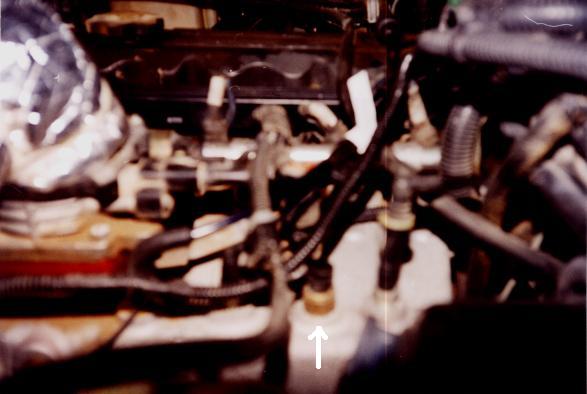Relocating the IAT sensor to cold airbox improves performance
by Dino SavvaOn the Jeep 4.0 engine, the IAT (intake air temperature) sensor is in the intake manifold behind the throttle body. The intake manifold becomes extremely hot because the exhaust manifold is immediately below it.

1 = Stock IAT sensor location
2 = Wiring harness extended to new sensor
3 = New IAT sensor location
Relocating the IAT sensor to the cold airbox allows it to pick up ambient temperature (I had previously insulated my airbox with a foil covered windshield sunshade) instead of intake manifold temperature. The latter can be as much as 60*F higher than ambient. Lower temp. signals are sent to the ECU which then enriches the fuel/air

mixture at WOT (wide open throttle) and slightly advances the ignition timing. The result is increased horsepower/torque if previous airflow-enhancing mods (intake, exhaust) have caused the engine to run lean. The benefit is greater in hot weather conditions.
Relocating the IAT sensor is easy. I kept the stock sensor in its original location. I bought another sensor from a junkyard Jeep 4.0 HO engine, drilled a hole in the airbox lid just big enough for the sensor to fit tightly, and screwed it in.

This is how it looks from inside the airbox (arrow).
I then extended the wiring to reach the relocated sensor. This gives me the ability to switch between the two sensors if I want. Voila. As easy as that.
Did this modification improve performance?
Definitely. Even after correcting my times for elevation, vehicle weight, barometric pressure, ambient temp. and humidity, acceleration at WOT from 30-50mph in 4th gear (26.6mph/1000rpm) improved from 7.7 to 7.5secs , 40-60mph from 8.0secs to 7.7secs, 50-70mph from 8.3secs to 8.0secs, 60-80mph from 8.8secs to 8.4secs, and 70-90 from 9.7secs to 9.2secs.
This translates into a gain in rear wheel torque of 4lbft at 1500rpm, 6lbft at 2000rpm, 7lbft at 2500rpm and 7lbft at 3000rpm.
Those are solid gains for such a cheap mod.
Was there any change in fuel consumption ?
No. Long term testing didnít show any tangible change in gas mileage. This indicates that part-throttle fuelling is not affected by this modification.
Verdict ?
Probably the best bang-per-buck performance mod for this engine, and thereís no downside. Highly recommended.